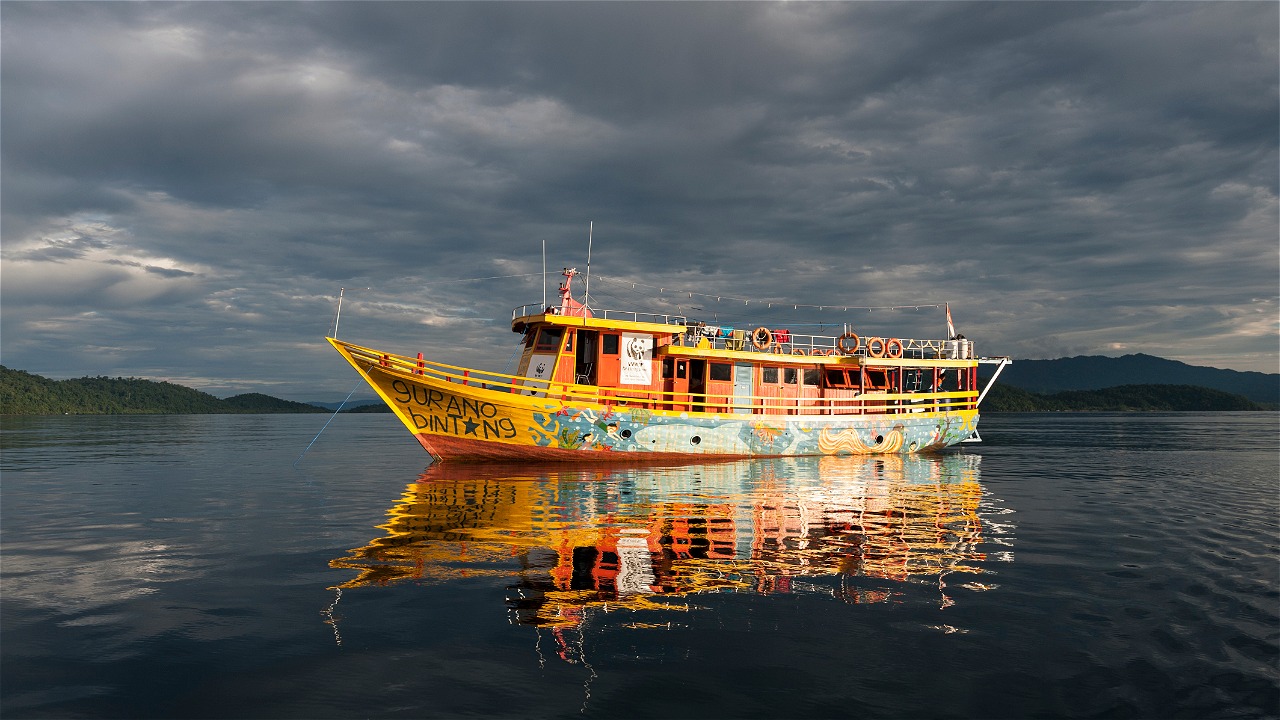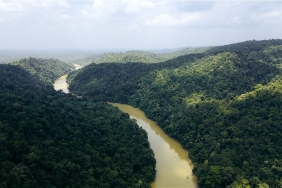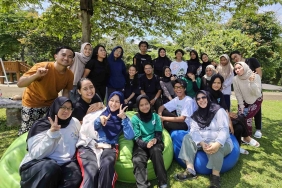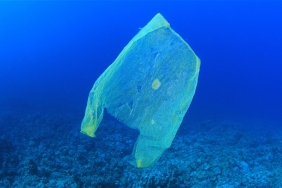ENVIRONMENTAL EDUCATION IN SAWENDUI WITH KM. GURANO BINTANG
By: Natalia Trita Agnika
During WWF-Indonesia's Saireri Expedition, in addition to conducting socio-economic census, village profile data collection, and natural resource potential, the expedition team also conducted environmental education activities. Usually, in these activities, children from the village will board KM. Gurano Bintang and learn on board. However, this was not the case in Sawendui Village, Yapen Islands Regency on Sunday (12/06). Due to natural conditions that did not allow it to lean, KM. Gurano Bintang had to anchor far from the village so that the children could not get on the ship.
The expedition team decided to conduct environmental education activities in the village, precisely in the traditional house building of Sawendui Village which is located on the beach. This village does not have a school. Children who go to school must take a boat to a school located in another area. Some are even left for one week in other areas to attend school and return to Sawendui Village on weekends. Unfortunately, there are many children who do not attend school in this village. Not surprisingly, many do not know colors, are not fluent in reading, and have never even colored.
Environmental education activities in Sawendui Village begin with coloring activities and reading books about typical Papuan animals for children in grade 3 SD and above. While children who are still young up to grade 2 elementary school are invited to color pictures of marine animals and cockatoos. For this younger class, WWF-Indonesia's outreach team first introduced them to various colors. After that, they began coloring.
WWF-Indonesia's outreach team in collaboration with the SKPD officials of Yapen Islands Regency who participated in the Saireri Expedition also invited the children to play giant snakes and ladders on the beach. This game really attracted the attention of children and parents who were there. Divided into two teams, each had a giant "pawn" represented by the facilitators from WWF-Indonesia's outreach team. The children were tasked with rolling a giant dice. Every time they stepped onto a box that had a certain picture, the older sibling had to explain about the picture. For example, when the sister facilitator stops at a picture of a fisherman who is fishing with bombs, she will explain the negative impacts of this activity. Or when he stopped at a box with a picture of a sea turtle on the beach, the facilitator would explain about how sea turtles lay their eggs and how to help protect them. Laughter never ceases to color this game, especially when one of the facilitator's older siblings has to go down to the same box five times in a row because he stepped on a snake symbol.
Understanding the environment for children and the people of Sawendui Village is important because this village has enormous natural resource potential. Sawendui Village has a forest area that is a playground for birds of paradise. The forests in this area are also overgrown with various trees with high production value. In addition, the sandy beach in Sawendui is a nesting ground for various turtles, including leatherback turtles, hawksbill turtles, green turtles, and Olive Ridley turtles.
Environmental education in Sawendui Village was closed with the distribution of green bean porridge for children. The hope is that the next generation in this village will get adequate nutritional intake so that they are always healthy. In the evening, the Saireri Expedition team held a movie screening together on the beach about the environment.





